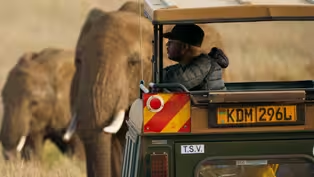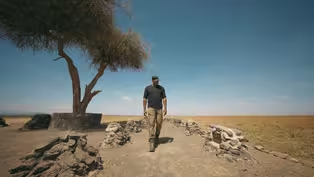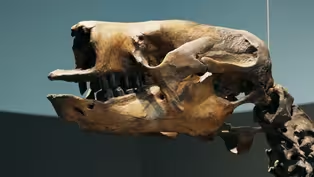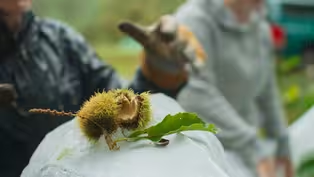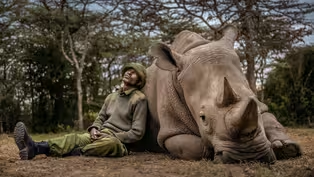
Orca SOS: Sniffing Out Clues to Save the Southern Residents
Clip: Season 2 Episode 6 | 3m 7sVideo has Closed Captions
Deborah Giles and her dog Eba track whale poop to help save endangered orcas.
Orca researcher Dr. Deborah Giles and her scent-detecting dog, Eba, are racing to save the southern resident killer whales — an endangered group with just 73 members left. By tracking orca poop, they gather vital data on stress, pregnancy, diet, and health. With Chinook salmon populations collapsing, these orcas are starving, and Giles is fighting to change their fate — one scat sample at a time.
Problems playing video? | Closed Captioning Feedback
Problems playing video? | Closed Captioning Feedback

Orca SOS: Sniffing Out Clues to Save the Southern Residents
Clip: Season 2 Episode 6 | 3m 7sVideo has Closed Captions
Orca researcher Dr. Deborah Giles and her scent-detecting dog, Eba, are racing to save the southern resident killer whales — an endangered group with just 73 members left. By tracking orca poop, they gather vital data on stress, pregnancy, diet, and health. With Chinook salmon populations collapsing, these orcas are starving, and Giles is fighting to change their fate — one scat sample at a time.
Problems playing video? | Closed Captioning Feedback
How to Watch Human Footprint
Human Footprint is available to stream on pbs.org and the free PBS App, available on iPhone, Apple TV, Android TV, Android smartphones, Amazon Fire TV, Amazon Fire Tablet, Roku, Samsung Smart TV, and Vizio.
Buy Now

Surprising Moments from Human Footprint
Do you think you know what it means to be human? In Human Footprint, Biologist Shane Campbell-Staton asks us all to think again. As he discovers, the story of our impact on the world around us is more complicated — and much more surprising — than you might realize.Providing Support for PBS.org
Learn Moreabout PBS online sponsorship(soft music) (deckhand) To the right of that shiny spot.
Making giant splashing-- look at that!
(Giles) Yeah, that’s whales.
Good eyes.
Okay.
Everybody hang on.
(hip-hop music) (Shane) This is Deborah Giles, or as most people know her, Giles.
She’s been studying orcas, also known as killer whales, for nearly 20 years.
But it’s her newest assistant who might just be the team’s MVP.
♪ (dog barks) (Giles) She’s trying to orient to smell.
-Okay.
-And then, as we’re coming into the scent cone, she’ll move to the front of the bow, she’ll start maybe whining.
(Shane) Okay, but she’s basically your poop compass.
(Giles) She is our poop compass.
The tip of her nose is gonna point us at that smell.
-Okay.
-And then she’s working for playtime, that’s her reward, is playtime.
(Shane) Aww.
You heard that right.
The hero of Giles’s research is an Orca-poop-sniffing pooch named Eba.
(quirky music) ♪ (Giles) We go in and we collect the scat sample off the water.
(solemn music) (Shane) Whale poop can yield a smorgasbord of data with minimal disturbance.
DNA identifies the pooper, while other tests paint a detailed picture of the whale’s diet, hormones, and overall health.
Giles is monitoring these orcas, a distinct population known as the southern resident killer whales-- because they’re in deep trouble.
(Giles) So, 70% of the females in this population who are getting pregnant are unable to bring their calves to term.
So, they’re miscarrying or the baby is born alive and dies right away, 70%.
How long is an orca pregnant before she gives birth?
Seventeen months.
(Shane) Wow.
Long time.
(grim music) (news anchor) A mother orca whose calf died after birth is still carrying her baby, 17 days later.
♪ (Shane) The southern residents aren’t the only orcas in the Salish Sea, but they are the most endangered.
(Giles) By far the biggest problem is the lack of prey.
(melancholic music) (Shane) Most orcas hunt other mammals, but the southern residents prefer fish.
(Giles) The fish eaters are dictated by what mom says, what grandmother says.
These are matriarchal societies.
(Shane) The southern residents are particularly reliant on Chinook or King salmon, which have declined by more than 90% in the last century.
Without the salmon, orca mothers are starving and many can’t carry their babies to term.
Despite legal protection, the population is still dwindling.
♪
Video has Closed Captions
Clip: S2 Ep6 | 5m 14s | Kenyan farmers and rangers balance danger and devotion in their fight to coexist with elephants. (5m 14s)
Video has Closed Captions
Preview: S2 Ep6 | 30s | Shane meets species on the brink of oblivion, and the people who won’t let them slip away. (30s)
Fossils in the Asphalt: Unearthing LA’s Ancient Past
Video has Closed Captions
Clip: S2 Ep6 | 3m 5s | At La Brea Tar Pits, Emily Lindsey digs into Ice Age life beneath LA’s surface. (3m 5s)
The Ghost Tree: Bringing Back the American Chestnut
Video has Closed Captions
Clip: S2 Ep6 | 8m 15s | Sara Fitzsimmons fights to resurrect a tree that once ruled the eastern U.S. forests. (8m 15s)
The Northern White Rhino Rescue Mission
Video has Closed Captions
Clip: S2 Ep6 | 11m 4s | Scientists fight to revive the northern white rhino — before it’s too late. (11m 4s)
Providing Support for PBS.org
Learn Moreabout PBS online sponsorship
- Science and Nature

Capturing the splendor of the natural world, from the African plains to the Antarctic ice.

- Science and Nature

Explore scientific discoveries on television's most acclaimed science documentary series.
Winnipeg In Bloom











Support for PBS provided by:
